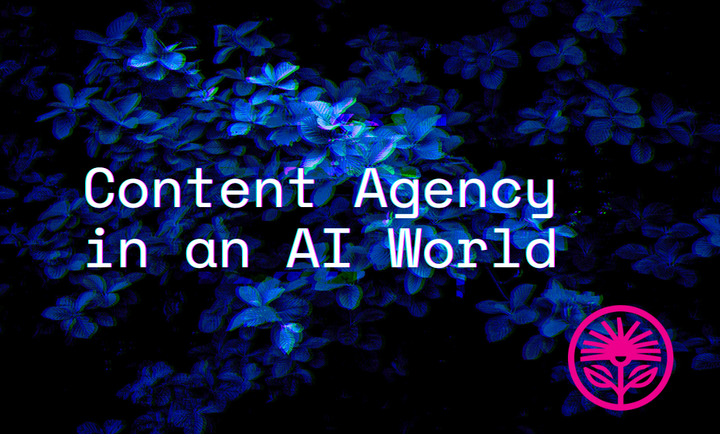Uncanny Marketing — Kelford Labs Weekly
Introducing personalized mistakes.

I think there’s an emerging uncanny valley in marketing, and especially marketing content.
The uncanny valley, as I’m sure you’ve heard before, is when things look almost human in, say, computer graphics or animated movies, but they’re not quite there and it kind of creeps us out.
I think we’re getting there with marketing.
Yeah, AI-generated text has an uncanny feeling, but organic human content is drifting that way too.
There’s this icky polish put over business writing—not just with jargon, but with specific types of formatting. Like the short snippet, one-line-at-a-time style of LinkedIn “broetry” you see on one end.
And then there’s the overly formal, overly stilted, overly tablets-brought-down-from-the-mountain feel of “professional” writing.
On both sides, we’re getting to the same problem: It just doesn’t feel human. It’s not relatable. It’s not approachable.
It’s not interesting or entertaining—and therefore informative—to actually consume.
But do you know how they’re making AI voices sound so natural? Like those Audio Overviews in NotebookLM that construct a podcast from sources you upload?
According to the writer Steven Johnson, who actually works at Google on NotebookLM, they do a whole separate pass when they’re processing the audio to introduce “disfluencies.”
Those are the pauses, the mistakes, the ums and the ahhs that break up our speech and make it less fluent, less smooth.
The AI actually introduces those so they sound less good and more real. And I think there’s something that we can learn from that.
There’s a common criticism of TikTok content these days, or anything that comes from influencers, that because everyone’s working for the same algorithm, all the content is starting to feel the same.
Because it’s not really human anymore. It’s machine-made. It’s machine-directed.
It’s just human fingers and faces doing what the machine is demanding.
So there’s an opportunity here, I think, to do something different, something that only you can do. Which is to lean into your own disfluencies, your own positive humanizing mistakes. A way to make your marketing content, your whole brand, feel more human, more approachable, more relatable.
Less like an AI, and less like a person trying to please an AI algorithm.
1) Patterns
What are the speech and writing patterns unique to you?
This post, actually, I wrote as a brief outline and then spoke aloud, just kind of riffing and talking to my computer. I then took that audio and turned it into a transcript, and then I edited that. So it sounded more like me and less like the way my fingers have been trained to type.
So, first, think about the ways you can introduce your own eccentricities and uniquenesses into the way you talk about your business.
The things we’re self-conscious about or try to smooth over with the aesthetics of professionalism might be the exact things keeping us sounding real. The exact things our audience wants to hear so they know we’re human like them.
2) Pace
Next, what kind of pace can you keep up that no one else, including a computer, actually can?
It’s not necessarily just about being fast. It’s about being unique. Because I didn’t say, how fast can you type? Or how fast can you write? Because yes, AI can do it so much faster.
What I’m asking is, what do you know so much about that you can talk anyone’s ear off, anytime?
And can you make content about that fast, frequently, and focused?
Because another type of disfluency you can introduce is your own personal stories and experiences, your own sidetracks and anecdotes.
When I’m on calls with clients, I always find that the best way to make a point clearer is to introduce a novel analogy or visual metaphor. Some sort of story that makes the point.
I was talking to a client once about how they needed to be a little less perfectionist about getting their strategy perfectly correct—because they just didn’t have enough information about how to actually make it more correct.
They were just paralyzed and not getting started.
So I told them about how there’s a bunch of kids that live on our street, and they all ride bikes.
And you can see the difference in the older kids and the younger kids with their bikes, and their experience with it. Because when the young kids are stopped, if they want to change direction, they’ll do this weird little hop and pivot.
They’ll haul up on the handlebars and scoot an inch or two to the left or right until they’ve made their turn. But sometimes they just end up tangled on the ground with a bike caught up in their shoelaces.
Older kids know that you don’t try to turn while you’re stopped.
They just start moving off in any direction, and then once they’ve got some speed and momentum, they turn and head off in the direction they actually wanted to go.
So I acted out this metaphor on a client call, and, yes, it got a few laughs at the absurdity. But everyone instantly understood the point that when we try to turn before we’re moving, we’re just going to end up tangled and on the ground.
But if we get moving, we have the momentum that lets us control our direction and our destiny.
Those are the kinds of anecdotal disfluencies that I introduce in my speaking, in my client counsel, in my conversations—that are sidetracks, that are tangents, but that make the point that much clearer. And they’re the kinds of metaphors and analogies that are unique to me and the way I think.
I’ve got a million of those stories, and I’m sure you have your own unique way of speaking that no one else can replicate and makes you seem especially human.
Lean in to the pace that you can manage because you have a perspective no one else has.
3) Perspective
Because, let’s face it, your perspective is skewed.
So is mine. So is everyone’s. That’s the idea.
Your clients want a different perspective than their own. So show them you have it.
Lean into your quirks, your preferences, your opinions.
Obviously, there’s a line between quirky and unprofessional, and we’ll all find our way to it. But there’s a massive stretch of territory to explore there.
So I intend to introduce, over time, more of my own hobbies, like my love of arthouse cinema, my obsession with industrial history, and even my experiments with building AI tools for fun.
These are going to get introduced more often into my writing and into my content, not just so that you can see that I’m actually a person, but so that my writing becomes more personable, more interesting, more entertaining, and as a result, more useful.
Because our hobbies, beliefs, and values are what make us who we are, and who we are informs what we do and how we do it.
And it’s those peeks behind the curtain or behind the mask of perfect fluency that reveal what makes us special, and what makes us extra valuable to our very best clients.
So think about patterns—your patterns of speech, of writing, of work, and what makes you unique.
Think about pace—what you know that no one else knows, and your ability to talk about it in a way no one else can.
And think about perspective—what makes you, you, and how that makes you extra helpful.
If we don’t watch out, we’re all drifting toward an uncanny valley where we seem inhuman, uninspired, and uninteresting.
But we can bridge that gap with uniqueness, difference, and a little disfluency.
We can reinforce our marketing position and demonstrate our unique value at a distance by being more human. More unique. More us.
We've just got to try.
I’m going to.
Will you?
Kelford Inc. shows you the way to always knowing what to say. Finely crafted marketing positions and messages for hands-on entrepreneurs.



